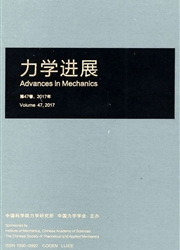

 中文摘要:
中文摘要:
采用CFD(计算流体动力学)技术,开展了飞行器前体/发动机一体化气动热环境分析.对层流区、转捩区和湍流区分别采用计算模型,在湍流区利用压缩性修正的SSGZ-J k-ε湍流模型,在转捩区引入代数型转捩因子模型描述边界层由层流逐渐过渡为完全湍流的流动过程.计算了前体和内通道的表面热流,并与实验结果进行了对比.结果表明所采用的计算方法可以较好地预测前体及发动机内通道热流率,流动状态、几何结构及激波入射对热流值影响较大.
 英文摘要:
英文摘要:
Aeroheating analysis of propulsion/forebody integration has been conducted by means of CFD technique. Especially, different computation models are adopted for different flow regime,including laminar,transition and turbulent flow. In this text,compressibilitycorrected SSGZ-J k-ε model has been employed in turbulent region, moreover, we introduce algebraic intermittency model of transition to simulate the transition process from laminar to turbulent. By these methods, wall heat flux of forebody and engine has been calculated and compared with experimental results. Results show that compressibility-corrected SSGZ-J k-ε model can reasonably predict heat flux in the complex high-speed compressible flow, and algebraic intermittency model of transition can simulate transition process of boundary layer. Flow regime,structure geometry and shock wave have great effects on heat flux.
 同期刊论文项目
同期刊论文项目
 同项目期刊论文
同项目期刊论文
 期刊信息
期刊信息
